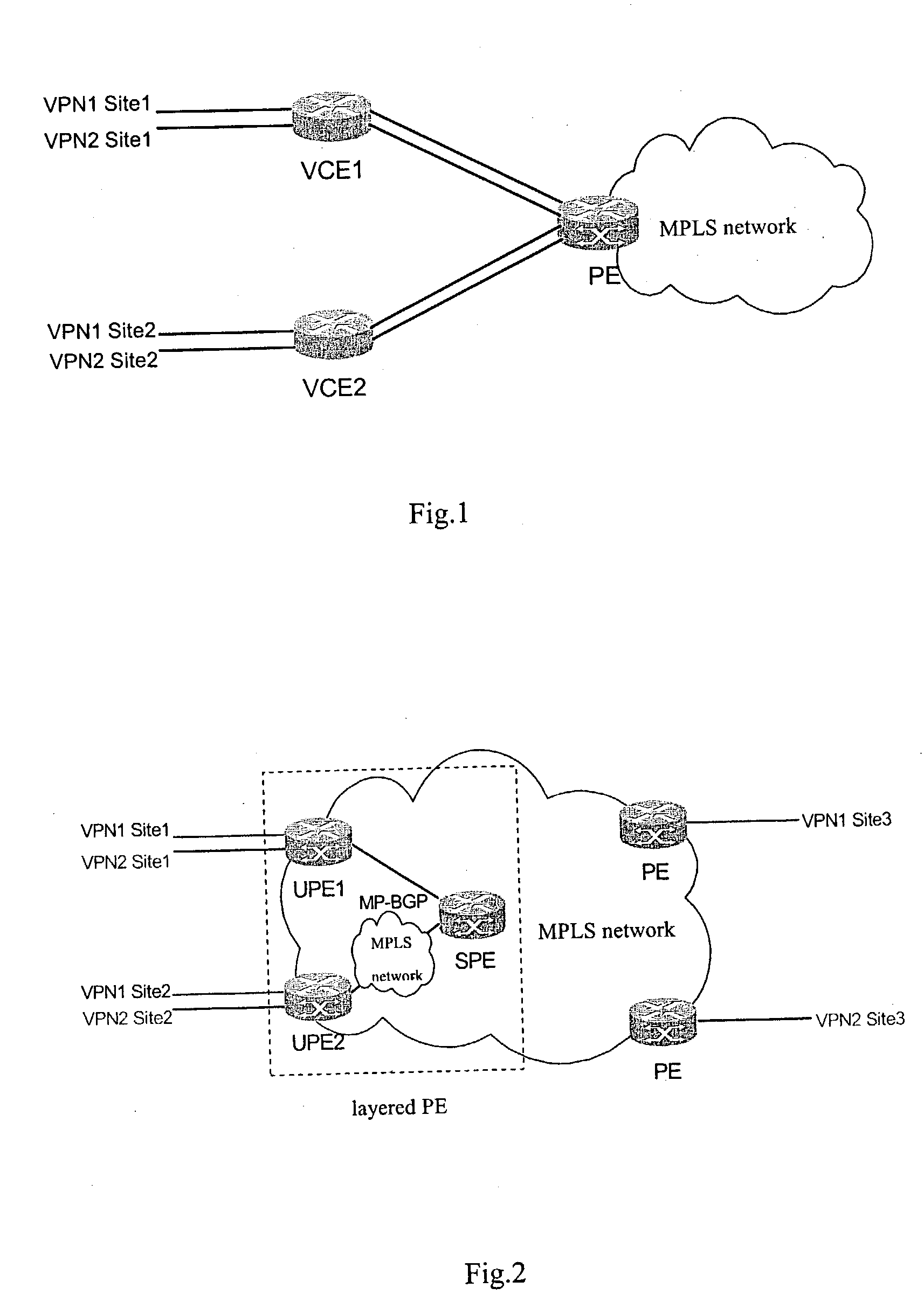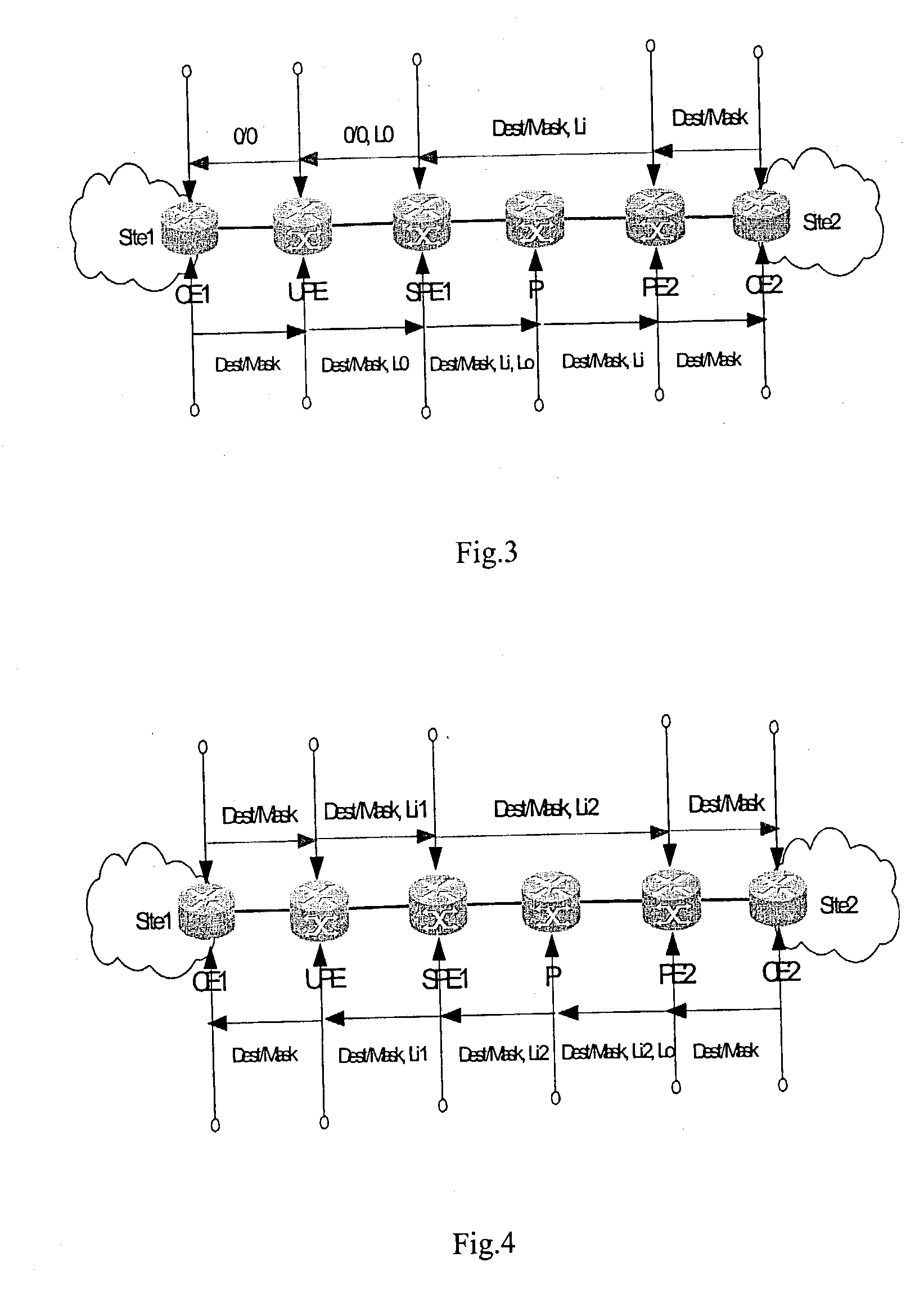3-Layer VPN and constructing method thereof
a technology of vpn and layer, applied in the field of 3layer vpn, can solve the problems of affecting the expansion of the network towards the edge, the performance of the device degrades, and the bottleneck of the pe device in large-scale deployment,
- Summary
- Abstract
- Description
- Claims
- Application Information
AI Technical Summary
Benefits of technology
Problems solved by technology
Method used
Image
Examples
Embodiment Construction
[0040] For example, in traditional MPLS VPN running BGP (Border Gateway Protocol), the categorization of CE and PE devices are mainly done according to the management demarcation between operators and subscribers. CE and PE devices are the border between operators and subscribers. CE and PE devices exchange route information by using E-BGP (External Border Gateway Protocol) or IGP (Internal Gateway Protocol) route protocol, or static routes. It is not necessary for CE devices to support MPLS or "know" the VPN. PE devices exchange route information through MP-BGP (Multi Protocol-Border Gateway Protocol) between them.
[0041] In the BGP / MPLS VPN, the VPN comprises a plurality of sites, each of which corresponds to a VRF (VPN routing / forwarding instance). A VRF mainly comprises: a IP route list, a label-forwarding list, a series of interfaces using the label-forwarding list and management information (comprising RDs (Route Distinguisher), route filtering policy, and a member interface li...
PUM
 Login to View More
Login to View More Abstract
Description
Claims
Application Information
 Login to View More
Login to View More - R&D
- Intellectual Property
- Life Sciences
- Materials
- Tech Scout
- Unparalleled Data Quality
- Higher Quality Content
- 60% Fewer Hallucinations
Browse by: Latest US Patents, China's latest patents, Technical Efficacy Thesaurus, Application Domain, Technology Topic, Popular Technical Reports.
© 2025 PatSnap. All rights reserved.Legal|Privacy policy|Modern Slavery Act Transparency Statement|Sitemap|About US| Contact US: help@patsnap.com



